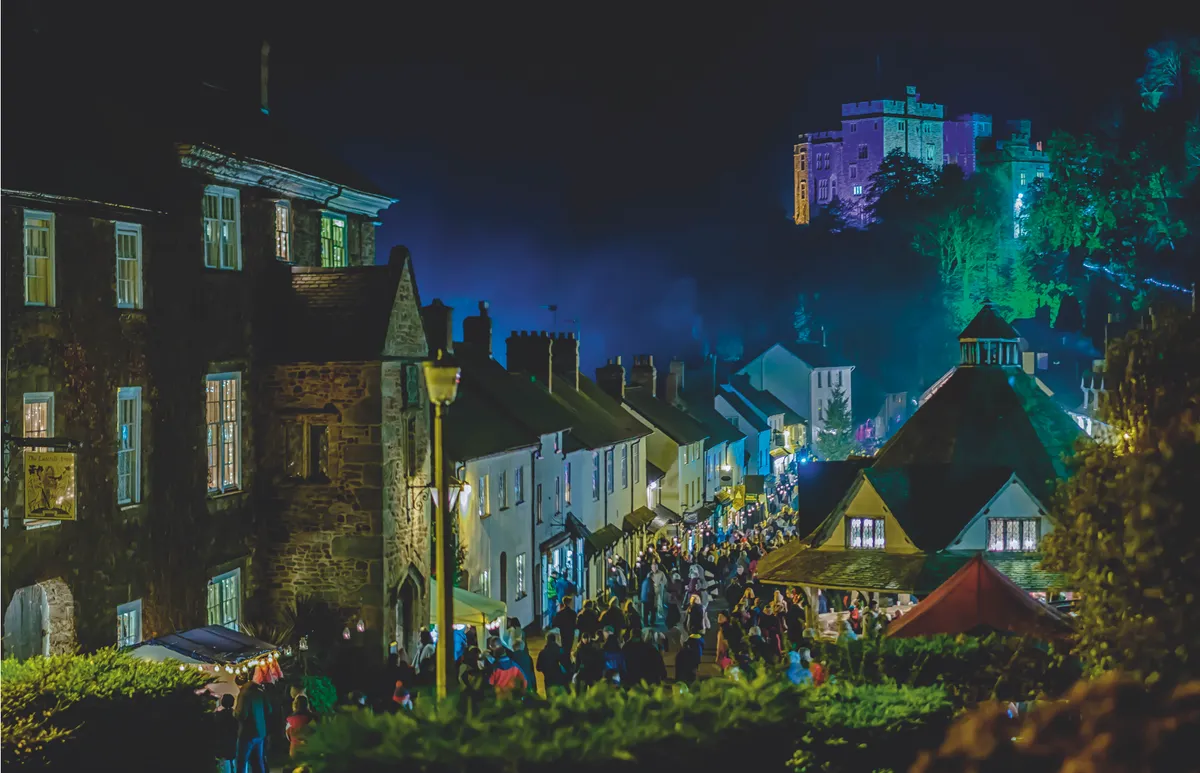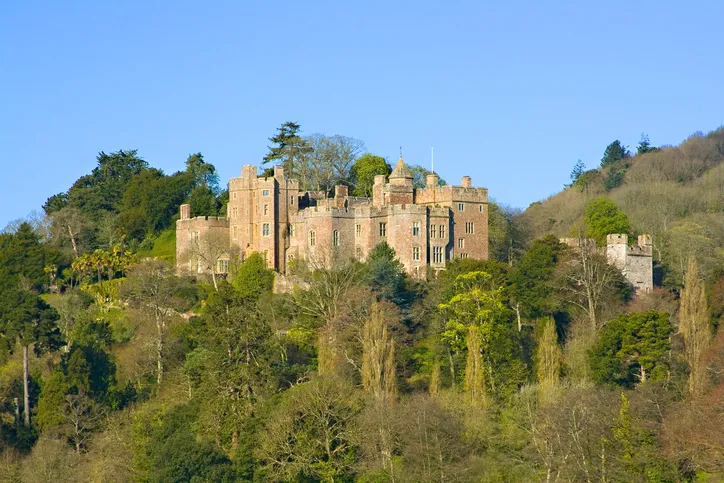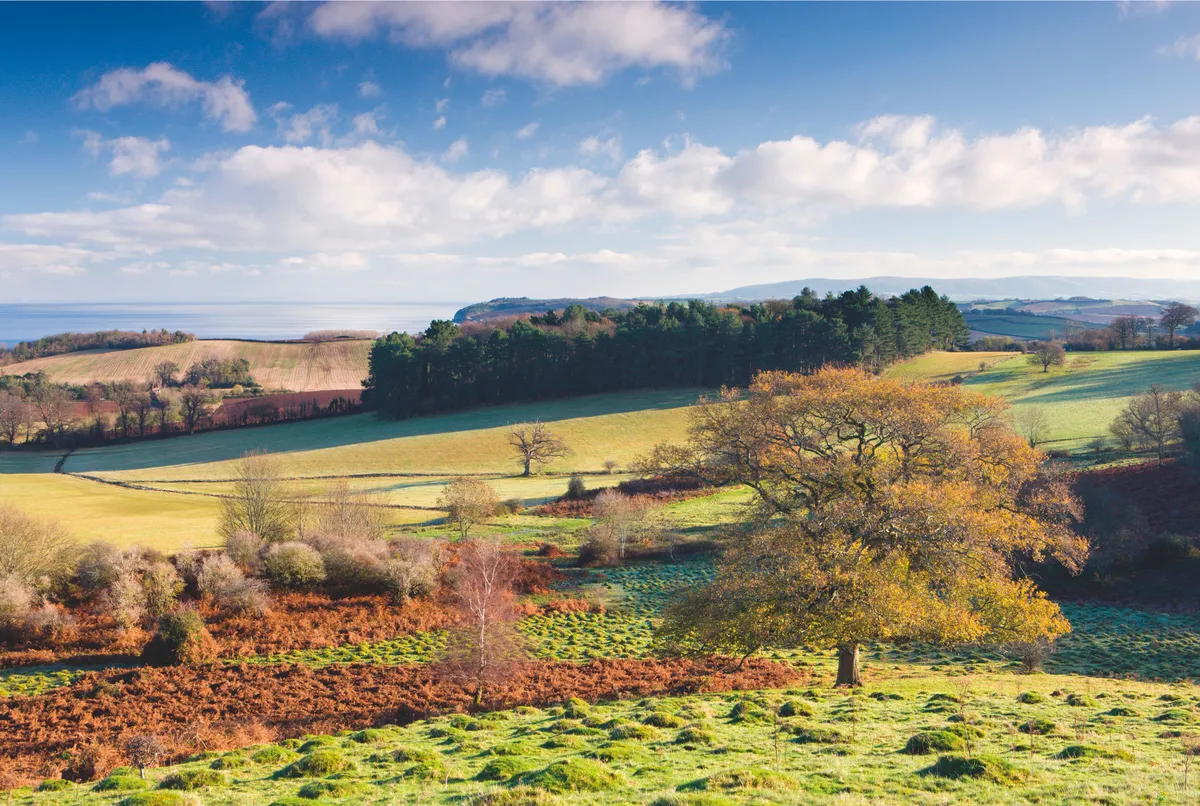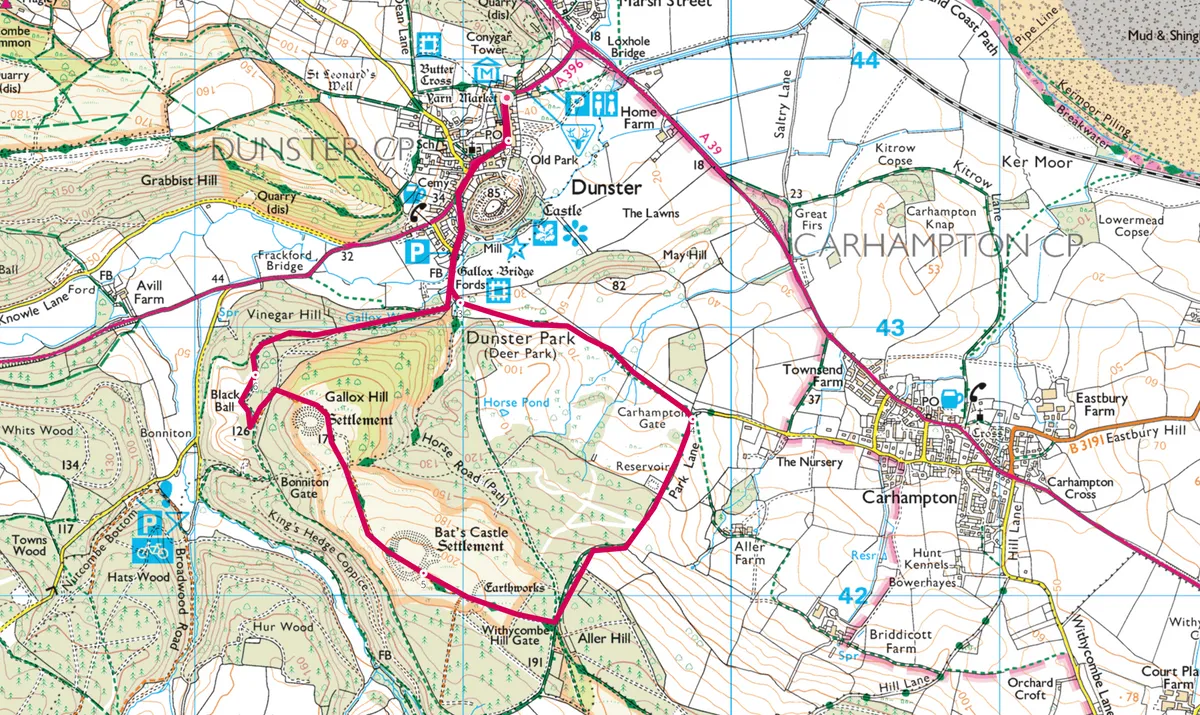Dunster in winter is a delight. The exhaust beat of the West Somerset Railway steam train rings out as it departs the local station and begins its climb into the Quantock Hills.
And wisps of smoke curl up from the chimneys of the medieval village, a sure sign that fires are blazing in inglenook fireplaces, ready to welcome hikers back from a crisp winter’s ramble.

This walk is an energising appetiser to another of Dunster’s December delights. On the first weekend of the month (1-2 Dec), just after dusk, the village abandons modernity and, one by one, the houses and inns begin to glow with lanterns and candlelight. Watching over this timeless scene is the National Trust’s 11th-century Dunster Castle, lit with multicoloured lights for the event, while musicians and choirs add a festive sound to the night. The countdown to Christmas has begun.
Dunster walk
4 miles/6.4km | 2.5 hours | easy–moderate
1. Village Tour
Before heading out on the walk, spare a moment for a brief circuit of the village, taking in the old butter cross in St George’s churchyard, the restored dovecote and the 16th-century tithe barn.

Start by the Yarn Market on High Street – the 17th-century covered market place was at the heart of a thriving wool trade. Head up High Street to Dunster Castle and, just before the entrance, turn right along Castle Hill to reach West Street. Turn left on to Mill Lane, with the mill race on the left-hand side, and then turn right down a footway that leads to Park Street.
Park Street is home to some charming thatched cottages with pink-washed walls. The street runs down to the ford on the River Avill.
2. Castle and Folly
Cross the river on charming Gallox Bridge. It’s an idyllic scene today, but the 15th-century bridge was once known as ‘Gallows’ Bridge.
Beyond the river, the track climbs to a deer gate and a junction of paths. Take the path to the left through the open country of Dunster Deer Park. Behind you is Dunster Castle and, just beyond, on its own little hill, the folly of Conygar Tower.
3. Bat’s castle view
Follow the path to Carhampton Gate and then turn right up Park Lane, an old, narrow route embowered with trees. Climb to Aller Hill and then turn right through Withycombe Hill Gate. A clear, level path runs on through fading bracken to Bat’s Castle – this ring of stone ramparts and ditches is an Iron Age hill fort.
It has fantastic panoramic views over the Bristol Channel to South Wales and inland to the Quantock Hills and rolling Exmoor. Look out for grazing Exmoor ponies and majestic red deer, now recovering from the autumn rut.
4. Iron Age camp
The path runs through the centre of the fort and downhill to Gallox Hill, where there is evidence of another Iron Age enclosure, sometimes referred to as Black Ball Camp.

5. Food by the fire
Follow the bridleway downhill towards Black Ball and Vinegar Hill, joining a forestry track that leads down to the junction of paths just above Gallox Bridge. Retrace your earlier steps back into the heart of Dunster.
Seek out the spectacular 15th-century Luttrell Arms on High Street – with its many rooms, dark oak panels, roaring fires and Exmoor ales – for a hearty meal after the walk.
Dunster map


